Hello! I drove out of the parking lot located along the road (cars in the parking lot are at 45 degrees relative to the road). I went in reverse. There were no obstacles, but a woman suddenly appeared and drove into my back right side, driving off the main road with a secondary one. The right lane was the main one and this parking lot, from where I drove out. The secondary road was through me through 1 car, which was also parked at an angle of 45 degrees, because of which neither I nor the woman noticed each other on the car that was driving on the main road. Both were not admitted guilt. I sincerely consider myself innocent from the first second of the accident, since I almost finished my exit maneuver from the parking lot and almost stopped to drive forward, and the second participant in the accident supposedly looked to the left, and was convinced of the absence of interference, but not making sure that everything ahead was normal, started moving , which ended in a collision. Debriefing in 10 days. Just in case, in the explanation, he wrote that he had left — stopped (that is, STANDED) —that was going to start moving forward, but did not have time. Tell me, what decision can the commission make? There is a witness - my passenger. Konstantin P. Moscow
Answer
Hello, Konstantin. The initial conclusions from your description can be formulated as follows: - if you were moving along the main road, and your opponent was on a secondary road, he was to blame; - if you, not convinced of the safety of the maneuver, start reversing from the parking lot, then you are to blame. It is difficult to say for sure, but we believe that it is not you who are to blame, since it is not forbidden to drive backwards, while the other car should have given way, provided that the sign gave way. Anyone who moves on a secondary road must concede, regardless of whether the driver is driving along the main road with a violation or not. If you believe in the analysis that your car was stationary, then the second participant in an accident may be charged with violation of clause 10.1 of the SDA. Against you - 8.12 SDA (reverse). Therefore, they will analyze all written materials, the scheme of an accident, take into account the arguments of the parties. Everything can decide the availability of data from the DVR (s). If you have a DVR record, you must provide it, and then the case can be decided in your favor, provided that prove that your car was standing. Reversing vehicles is permitted when this maneuver is safe, i.e. does not interfere with other road users. If necessary, the driver must resort to the help of others. In addition, reversing is prohibited at intersections and in places where a U-turn is prohibited according to paragraph 8.11 of the SDA.Features of reversing paragraph 8.12 of the SDA:
8.12. Reversing the vehicle is permitted, provided that this maneuver is safe and does not interfere with other road users. If necessary, the driver should seek the help of others. Reversing is permitted only if it does not interfere with other cars, motorcycles, pedestrians and other road users. and a very simple conclusion - if the car was moving in reverse and became a participant in a traffic accident, then the driver is to blame for the accident. Naturally, in the event of an accident, one should try to prove the guilt of another road user (Madame), for example, exceeding the established speed of movement, did not look to the right (presence of an obstacle). Meanwhile, the fault of the driver, reversing, in any case, remains valid. Reversing is prohibited (paragraphs 8.12 and 16.1 of the SDA): - at intersections; at pedestrian crossings; in tunnels; on bridges, overpasses, overpasses and under them; at level crossings; in places with road visibility in at least one direction less than 100 m; in places of stops of route vehicles; on motorways. And if it is proved that your car was backing up, and at the same time you had poor visibility (in the SDA - it is explicitly stated that when reversing you must take all actions for safe movement) - you will be recognized as the culprit.
In order for a motorist to survive in a modern city, it is necessary to master the art of masterfully parking his car in any situation. One of the typical ones is the so-called parallel parking, which is also taught in driving schools. In a driving school, this exercise is considered passed if no one is hurt and nothing is wrinkled, the car is parallel to the roadway and its external mirrors do not stick out onto the roadway. That is, the car smoothly and completely stowed into the parking pocket. Everything is logical and uncomplicated. But...
Moral training
In real life, very often motorists have to literally squeeze their car into a space that is only slightly longer than the car itself. Therefore, in order to safely maneuver in tight spaces, you must perfectly feel the dimensions of your car. If your car has a spare tire hanging on the tailgate or a trailer towing device sticks out from under the bumper, do not forget about it! A towbar can make a serious hole in the bumper of a nearby car.
Moreover, I speak of dimensions in the broad sense of the word. Maneuverability is significantly affected not only by the passport turning radius and wheelbase, but the front and rear overhangs. And even overhangs can play a cruel joke if the curb (aka curb) on the edge of the roadway is high enough - the loss of a mudguard may seem like a trifle. Large front overhang - a large “swing” the front end when maneuvering and the potential risk of catching a fence or a car opposite.
Technical preparation
The success of the entire operation does not depend to a small extent on how competent your landing is. Adjust the seat for you in height, backrest and the distance from the steering wheel. Make sure you have a good view through the windshield - through it the road in front of the machine should be visible. Turn the back of the chair back at an angle of 30 degrees - this will optimally distribute your weight throughout the chair. Press the car pedals all the way - you should be comfortable with such movements. You should not reach for pedals or on the contrary pedals to be very close.
Next, you need to adjust the steering wheel, for this it must be positioned at such a distance that it is convenient for you to rotate it and the dashboard is clearly visible. Ideal position - your shoulders touch the back of the seat, and outstretched arms while freely rest your wrists on the top of the steering wheel.
Adjust the interior mirror so that the rear window of the machine fully fits into it. The exterior mirrors must be adjusted so that the handle of the rear door is visible in the lower left / right corner of the near / far mirror.
Theory of Parallel Parking
For convenience, we define the terms. Parallel parking assumes that our car should drive backwards into a pocket between two other cars. The car to which our car should turn out to be the front part after completing the parking maneuvers, we will call the front car for short. Accordingly, the car to which our car will be standing backwards after maneuvers is the rear car. Actions to be taken to get a reliable result:
We drive up so that the rear left corner of the front car is at our rear right wheel. The interval between the sides of your and front cars should be about half a meter. That is, simply put, you need to stand parallel to the front car at a distance of half a meter.
We begin the movement backward, twisting the steering wheel to the right.
As soon as the right headlight of the rear car appears in the left mirror, put the steering wheel straight and continue slowly and accurately backing away.
As soon as our rear left wheel aligns with the left headlight of the rear car, we unscrew the steering wheel to the left and continue backing up.
When the car has reached parallelism with other cars, borders and fences - we stop.
If necessary, you can align a little, so that everything is absolutely perfect. And in conclusion. Having squeezed in between neighbors, think how they will leave. Do not press too close to one of them. If possible, leave enough space for both of them to leave. Be mutually polite.
Instead of a note
About borders
Steel reinforcement can stick out of the old crumbling border, which will turn your tire into "now it only suits a flowerbed." But smooth new curbs can damage both the wheel cap and the rim. And with well-known dexterity, you can curb the sidewall of the tire from the disc with a curb and the wheel will instantly lose air. When maneuvering, it is useful to lower the right mirror a little so that you can see the rear right wheel in it. Some cars can tilt this mirror automatically when you turn on the reverse gear - a useful feature.
About electronic assistants
Even an experienced driver when parking in difficult conditions may need the help of an outsider. In some cases, it can be replaced by electronics - the so-called parking sensors. Although a much more effective rear view camera. Moreover, it is better to purchase a car from which these systems are an official option and are installed at the factory. To trust the retrofitting of your car with parking sensors or a camera to any garage craftsmen or, moreover, an authorized dealer - is not worth it. The cost of these nice options is quite high, but if you compare with the cost of your own bumper and its painting ... Yes, and the rear can be a very expensive car. © Quto.ru
Tags: How, correctly, to leave, with, parking, reverse, reverse, step by step, instructions
From what moment do you need to turn the steering wheel when entering the garage. When you need to start turning the steering wheel when entering the garage ....
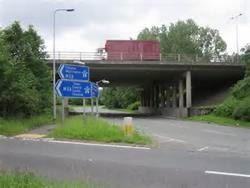

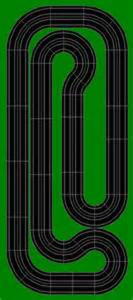


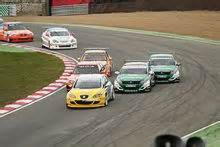
Sergey Nikolaenko | Topic Author: SDA
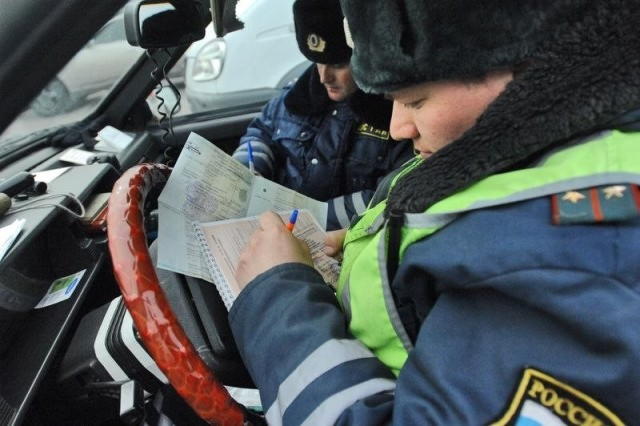
Reversing - how not to lose your rights?
Reversing is very dangerous. Despite the low speed, this maneuver can cause an accident. There is a collision with other vehicles, and the risk of knocking down a pedestrian. When can they be fined, and in what cases does the driver risk being left without a license?
First of all, I recall that according to paragraph 8.12 of the Rules, reversing is possible only if there is safety and there is no interference with other participants in the movement. Separately, a ban on reversing at the intersection is spelled out. I note that crossroads are not exits from adjacent territories that are not intended for through traffic (courtyards, housing estates, parking lots, gas stations, enterprises, etc.). That is, if you are moving along the road, and on the right, for example, entering the courtyard, then this is not a crossroads, which means that you can reverse.
In other words, if you are not sure that you will not hurt anyone or that your actions will not force other drivers to stop, then you cannot go back.
It is clear that in life everything is a little more complicated. When leaving the parking lot, for example, we often force others to slow down. But this is normal, drivers are well aware that it is difficult to reverse the parking lot. Especially for inexperienced drivers. However, the rules here are unambiguous and unforgiving. If you are not sure of the safety of the maneuver, ask others to help you. Moreover, such a restriction always makes the driver who reversed guilty of an accident.
But these are only general points. There are specific prohibitions. So, reversing is prohibited in those places where you can not turn around (paragraph 8.11 of the Rules):
At pedestrian crossings;
- in tunnels;
- on bridges, overpasses, overpasses and under them;
- at level crossings;
- in places with visibility of the road in at least one direction less than 100 m;
- in places of stops of route vehicles.
In addition, reversing is also prohibited on highways (paragraph 16.1 of the Rules).
No bans on reversing on one-way streets in
No rules. Of course, backtracking is possible with safety and to the nearest intersection or other restriction, about which I wrote above.
True, there are nuances. If you decide to call on one-way street
in reverse under the “brick” or you will drive backwards without making sure
security, you can be punished already under the "adult" article. We are talking about part 3 of article 12.16 of the Administrative Code of the Russian Federation "Traffic in the opposite direction on a one-way road." This is exactly what the Supreme Court reasoned in its decision of October 24, 2006 No. 18 (the changes under consideration were made to the document in February 2017).
In other cases, for improper reversing the driver
will be punished with a fine of 500 rubles (for violation of paragraphs 8.11 and 8.12 of the Rules)
or 2500 rubles (for reversing on the highway).
Of course, there are sophisticated violations. So, some drivers
manage to go round traffic jams on a roadside. At the same time, they are riding in reverse! Apparently, it is believed that traffic on the side of the road is prohibited only under normal control. But this is not so. The Rules clearly spelled out - traffic on the side of the road (sidewalks and footpaths) is prohibited. And it doesn’t matter how you drive - in normal mode or backwards. Here the fines are more serious than for general violations. For the curb - 1,500 rubles, for the sidewalk - 2,000 rubles.
Once in the car, be sure to fasten your seat belt. This can be done immediately, it can be done later, but during movement you must be fastened.
We start and warm up the engine and get ready for the start of movement. Turn on the dipped headlights or running lights. We look around, especially carefully if you intend to leave the parking space in reverse. We turn on the corresponding "turn signal", then the clutch - first or reverse gear - we move off. We recall that during a turn, the front wheels of the car move along a larger radius than the rear. Therefore, in order not to catch the car standing next to us, we are not in a hurry to turn the steering wheel, first we leave on straight wheels, and then we turn the steering wheel in the right direction.
While you are moving along the territory of the parking lot to the place of exit onto the road, you should be guided by the “right-handed” rule. There is no "main" road in the parking lot, therefore we give way to the "obstacle" on the right. We also give way to all pedestrians - it can be the same as you, drivers and their passengers going to their cars.
Before leaving the road, we indicate our intention - turn on the corresponding “turn signal” (most often the right one), and look to the left - in the direction from which the traffic flows. If the road is clear - we leave, if the traffic is dense - we skip and wait for the opportunity to exit. The direction indicator should work all this time! As soon as the “window” appears, some polite driver may slow down or stop to “let you out”, make sure the maneuver is safe and drive out onto the road.
Turn off the "turn signal" - on all modern machines when you return the steering wheel to the "straight" position, it will turn itself off - and immediately accelerate with switching to higher gears. It is necessary to gain the speed of the flow as quickly as possible, otherwise the cars driving behind you will very quickly “sit down” on your bumper. We control the situation behind your car short looks in the rearview mirror.
Departure from the sidewalk or roadside
Very often on roads with a carriageway having four lanes (two in each direction), the extreme lanes can be used to stop or park. And as usual, cars parked in this way stand parallel to the sidewalk, very close to each other. Consider the option of starting a car in a similar situation. In another way, this beginning of the movement can also be called exit from parallel parking.
Since we will move on the right side of the road, then all attention to the left is back. Before leaving, first you need to evaluate the situation in front and behind your car for the presence of free space for exit. If the distance to the car in front is not enough to maneuver, then slowly back up to the rear car. If you have passengers, then let one of them get out of the car and adjust your movement. If you are one (one), then you should not get very close.
After that, turn on the left "turn signal". Then we turn the steering wheel to the left, turn on the first gear and get ready to start. If the road has a slight slope, put the car on the hand brake. At this moment, it is already possible to slightly lower the clutch pedal of the gripping point. The right row is occupied by standing cars, therefore we will leave in the second, left row. But first you need to make sure that we do not interfere with vehicles moving in this lane. To do this, turn our heads to the left and observe the flow of cars. Skipping everyone!
As soon as the "window" appears, for example, the "last" car is approaching you, and the next one after it is about three hundred meters, we evaluate its speed - it does not move very fast, which means that we will not disturb anyone. We turn off the “handbrake” and begin slow movement on the half-clutch, and as soon as the last car passes by, we start - we add “gas” and completely release the clutch.
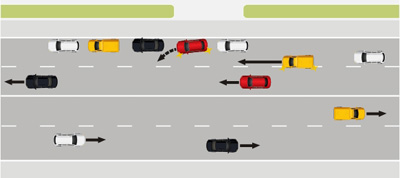
With the correct exit, the car will be at an angle of about 45 degrees with respect to the carriageway. If this angle is less, then you will not be able to leave, as the front car will interfere. If more - then strongly block the road to your left.
As soon as the front wheels of your car cross the line of the rear bumper of the car in front, we turn the steering wheel to the right. At the same time, we monitor the right front wing of our car so as not to catch the front car. And you always need to keep in mind that the door in front of a standing car can open at any time.
We leave in the second row, straighten the wheels and turn off the "turn signal". Further acceleration and overdrive. We pick up speed, controlling the situation at the rear of the car in the mirror - a car traveling behind can catch us very quickly.
We continue to move, but do not cling close to the cars in the front row. Remember about the doors of standing cars that can suddenly open, and also about the fact that at any moment a pedestrian may appear on the roadway (another driver or someone's passenger) and you will not have time to brake or steal. Therefore, stay away from them, but within your band.
A very common method of parking a car is od corner to the road. If there are almost no questions with a parking race, then back out of the parking lot much more difficult. But, if there are no other parked cars next door to you, then the task is simplified, since the visibility range in this case increases. If the other car is parked only on the left side - also not bad, since when leaving the parking lot you must first look back to the right. A car standing on the left can interfere only from the point of view that it can be touched by the left front wing of your own car. But the hardest thing is to leave if the cars are parked on both sides, especially if there is a large car to your right.
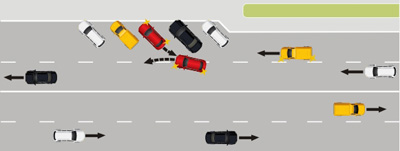
The main feature is that you will have to drive on the road in reverse with a very small visibility zone. Before starting the maneuver, look around and evaluate the road situation, and during the maneuver, be prepared to stop at any time.
If there are passengers in your car, ask one of them to get out and tell you about traffic on the road. If there is nobody to help, then there is nothing terrible - you still need to leave. Remember that before you leave, you must skip all the cars that move along the roadway.
After making sure that there are no obstacles, we engage reverse gear, the right “turn signal”, and slowly leave the parking lot. The first two or three meters is better to drive on straight wheels, then - according to the situation. We constantly monitor the front left and rear right wings of your car, as they can easily hook the left and right cars.
When the rear bumper of your car is aligned with the rear bumper of the right car, it is better to stop and evaluate the traffic situation again. If possible, you can use the windows of the car on the right. If this is not possible (for example, that car is tall or its rear windows are highly tinted), i.e. the review is completely closed, do not be lazy, get out of the car, after putting it on the parking brake (handbrake) and look at the road. If there are no obstacles, you can continue to leave.
When your rear window (the back of the rear seat) is aligned with the rear bumper of the right car, we begin to turn the steering wheel to the right, while we look at the left front wing of our car. As soon as the car has left and is completely in the lane, turn on the left direction indicator and start moving forward, controlling the situation behind the car with short looks in the rear view mirror. We must be prepared for the fact that someone else may leave the parking lot along our way and he may also have a limited view.
Sometimes drivers, in order to help another driver calmly leave the parking lot, do this: when they see that someone leaves the parking lot in reverse, they stop before reaching him, turn on the alarm and calmly wait. A traveler, having seen that he is being released, calmly completes the maneuver, “blinks” emergency gangs in gratitude and leaves. This is driver solidarity.
The considered options for leaving the parking lots and pouring into the stream are the ones when the stream is interrupted and we have a “window”. But what to do when the traffic flow is very dense and continuous? This often happens, especially during peak hours.
There is an exit. In this situation, turn on the left “turn signal”, turn the wheels to the left and begin to move slowly on a half-clutch to the side of the traveling cars. We look out the left window so as not to accidentally hurt any of the passing cars and slowly approach the stream, blinking “turn signal”. In such a situation, someone will definitely stop to let us in. And then we calmly leave for the second lane and do not forget to thank the driver who missed us, blinking him emergency gangs.
Approximately in the same way, a road exit is made from the curb. Standing on the side of the road, you must first skip all passing vehicles that can interfere with your movement, and only then, making sure the maneuver is safe, can you start moving.


